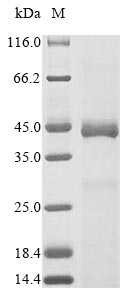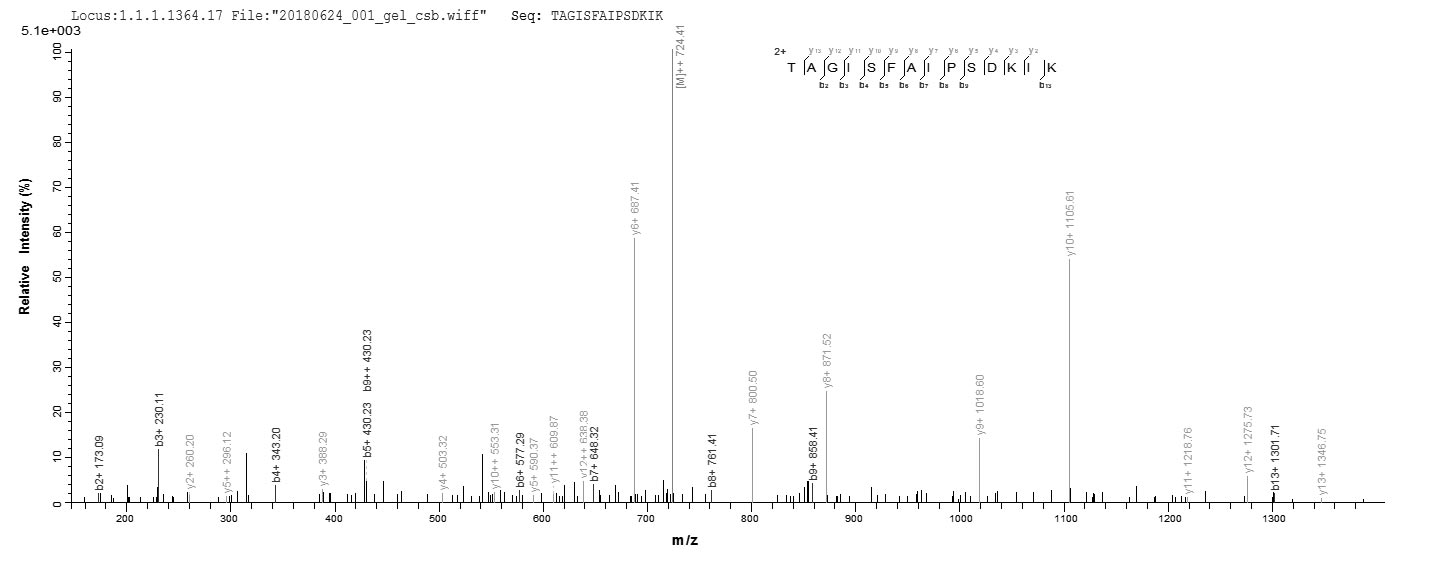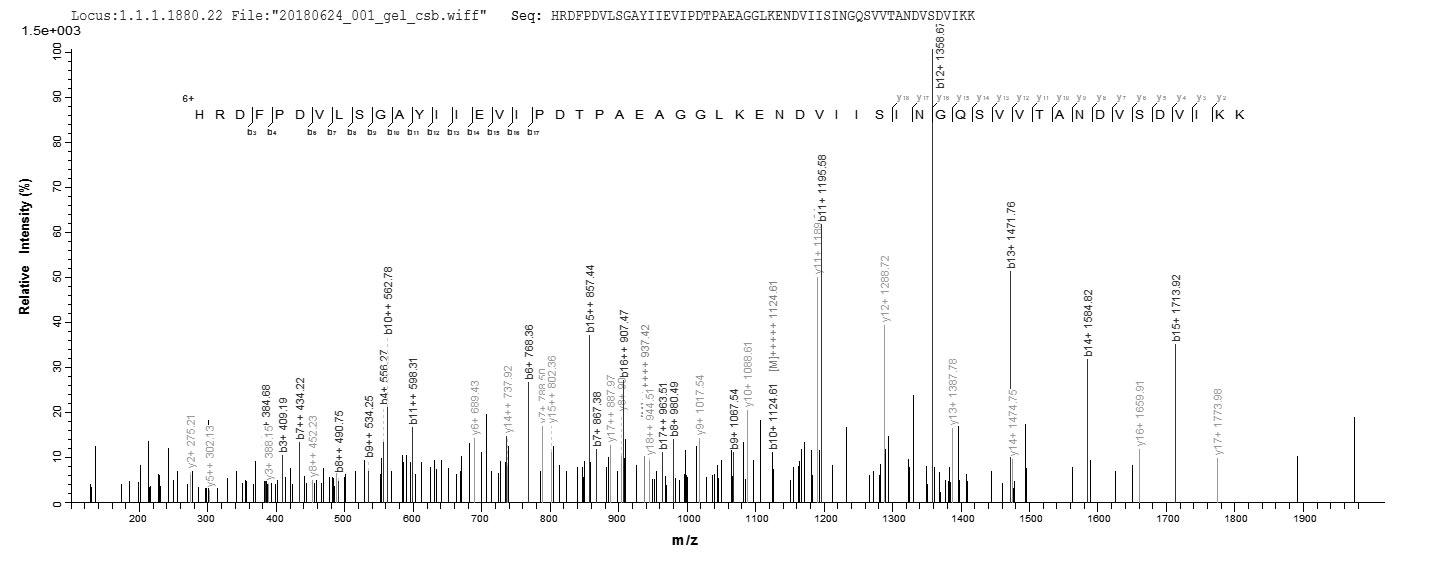The process of expressing the recombinant mouse Htra1 protein in the E.coli requires the recombinant DNA gene formed by the integration of encoding gene for the 141-480aa of the mouse Htra1 protein and C-terminal 6xHis tag sequence, the expression vector that the recombinant DNA gene inserts into, the E.coli that provided the necessary macromolecules and components for transcription and translation of the cloned expression vector. After isolation and purification, this C-terminal 6xHis-tagged recombinant Htra1 protein was obtained. This recombinant Htra1 protein is characterized by high purity (>85%, SDS-PAGE). This Htra1 protein ran along the gel to the band of approximately 43 kDa molecular weight.
Serine protease HTRA1 is a protein encoding by a gene named Htra1 in mouse and a gene named HTRA1 in human. This protein, a member of serine proteases, which has an active center that cuts (cleaves) other proteins into smaller pieces. It consists of four well-defined domains, including an IGFBP domain, a Kazal domain, a protease domain and a PDZ domain. HTRA1 is a secretory protein and also present intracellularly and associated with microtubules. The proteolytic activity of HTRA1 regulates a broad range of physiological processes involving in bone biology, osteoarthritis, intervertebral disc (IVD) degeneration and tumorigenesis.








